Sorted by date Results 1 - 25 of 143

“You plant spring-flowering bulbs in fall; they grow over winter, flourish in spring, and go dormant in summer,” said Heather Stoven, a horticulturist with the Oregon State University Extension Service. “Once they’re in the ground, they do quite well over multiple years with little maintenance.” On top of that, bulbs are drought-tolerant. “That’s one of the great things about them,” Stoven said. “Since they go dormant in summer, they don’t need to be watered.” She said that if you plan to i...

As the gardening season winds down and you pick the season’s last vegetables, let some plants go to seed and harvest them for planting next year. Saving seeds can be fun and is a great way to learn about plants. If you choose the right types of vegetables, you can keep them going year after year without buying them again. The key to saving seed is selecting open-pollinated or heirloom plants, which produce offspring with the same traits. Hybrids are bred from two different varieties for characte...

Would you like your homegrown potatoes to stay fresh and last longer? Research has shown there are best practices to harvesting and storing potatoes to ensure freshness. First, check for harvest maturity by digging up a potato. If the skin rubs off easily, wait another week before harvesting, said Heidi Noordijk, Oregon State University Extension Service Small Farms coordinator. To help prepare potatoes for storage, cut back on watering in mid-August. Let the vines die back before harvesting....

In spring garden centers will stock a tempting array of brightly colored tuberous begonias that are hard to resist. Gardeners have a tremendous choice of flower color in shades of orange, pink, yellow, white, and bi-colored. But these lush plants don’t grow over winter outside and must be protected. The tubers can be saved and planted again the next spring for another year of showy color. The tuberous begonias should not be confused with the low-growing wax begonias often called annual b...

Just as we begin to think about wrapping things up in the garden for the season, slugs slither out of their homes underground to lay their eggs for next year. That means it’s time again to slug it out with one of the gardener’s most familiar, frustrating, and certainly slimiest pests. “What slugs want is a place that’s warm and moist,” said Claudia Groth, an Oregon State University Extension Service Master Gardener. “That’s why spring and fall is when they’re most active. They’ll be comi...

While the practice of no-till gardening is not new, information has traditionally centered on agricultural field crops. Now, home gardeners are catching on. “The concept of no-till has been around for a couple of decades, but research has been very focused on field crops like wheat and corn, things largely grown in the Midwest,” said Erica Chernoh, Oregon State University Extension Service horticulturist. “There’s not much on vegetable production or fruit. There’s a lot to learn, and research...

Though they look tropical and taste exotic, figs grow fine in the long corridor of Western Oregon, where the climate offers not-too-cold winters and hot enough summers. The cooler summers of the coast and colder winter temperatures east of the Cascades are a different story, though. The weather in those areas is not conducive to growing the love-it or leave-it fruit. Not all varieties of figs thrive, however. Of 100 or more cultivars, Cody Copp, Oregon State University Extension Service...

For a hedge, arborvitae has a place. It’s tall, skinny, evergreen, low maintenance, and cheap. “Some people look down on arborvitae, but it fits in places that other things can’t,” said Neil Bell, a retired horticulturist for Oregon State University Extension Service. “And it’s about as low maintenance a plant as anything you can buy if it’s sited correctly.” When finding a location for arborvitae in the garden, Bell recommends full sun and well-drained soil. “They can take some afternoon sh...

Would you like your homegrown potatoes to stay fresh and last longer? Research has shown there are best practices for harvesting and storing potatoes to ensure freshness. First, check for harvest maturity by digging up a potato. If the skin rubs off easily, wait another week before harvesting, said Heidi Noordijk, Oregon State University Extension Service Small Farms coordinator. To help prepare potatoes for storage, cut back on watering in mid-August. Let the vines die back before harvesting....

Seeing rats in the backyard or, worse yet, in the house, can send people into panic mode, and for good reason. “There are definite social norms that say if you have rodents living near you it’s associated with dirtiness, garbage, and waste products,” said Dana Sanchez, wildlife specialist for Oregon State University Extension Service. “There’s a reticence to admitting to seeing rats or talking about them because there’s a fear of public shaming. That works to the rats’ advantage because peopl...

Reality can get skewed when there are so many sources of information - books, magazines, newspapers, nurseries, and, most of all, the internet and social media open up lots of room for contradiction. So, how do you find the right answer to gardening questions? Experts from Oregon State University Extension Service stepped up to bust some common gardening myths. Read on to get some research-based answers to 10 common misconceptions. For additional questions, call the OSU Extension Master...

No one wants to go through the winter with no clothes, not even the soil that grows our plants. So jacket up the soil in cover crops. If you’re not acquainted with cover crops, here’s the rundown: These hardworking plants can add organic matter and aerate the soil, protect it from compaction caused by rain, suppress weeds, and reduce erosion – some even add nitrogen to the soil, according to Brooke Edmunds, an Oregon State University Extension Service horticulturist. “They’re nice,” she said. ...

Espaliered trees bring fruit down to eye level. They allow for easy picking and take advantage of small spaces. But don’t kid yourself into thinking espaliers are any easier than regular-sized trees, said Cody Copp, an Oregon State University’s Extension Service horticulturist. “Espalier is one of many ways to prune – or design -- a fruit tree,” he said. “It’s beautiful, it doesn’t take up a lot of room in the yard. There are a lot of reasons to do it, but it takes dedication and time. It’s like...

Knowing the whys and hows of tomato diseases gives gardeners a leg up for successfully growing the most treasured of vegetables. Brooke Edmunds, a horticulturist with Oregon State University Extension Service, troubleshoots the following common problems that might afflict your tomatoes as the season goes on. Blossom drop – It’s usually caused by dry soil and dry winds, but also may be caused by a sudden cold spell, heavy rain, or too much nitrogen. Usually, not all blossoms will fall off, and...

If your goal is a nice lawn, leave clippings on the grass when you mow. It’s easier, feeds the grass, and leads to a better-looking and healthier lawn. Unless you’ve let the lawn grow excessively long, or the clippings are in thick clumps, grass clippings are a good source of nutrients. Leaving clippings helps save fertilizer costs and thereby prevents ground and surface water contamination. “Our research has shown that we can cut the fertilizer application rate almost in half when we retur...

If you have a good strong trellis, are a bit of a gambler, and have a love of kiwifruit, there’s no reason not to grow your crop. As vigorous as they are, though, don’t expect to plop these vines into the ground and stand back. There are three types of kiwifruit, Davis explained, the most common being the fuzzy kiwifruit (Actinidia deliciosa) available at the grocery store, usually the cultivar called ‘Hayward.’ Joining the lineup are hardy kiwifruit (A. arguta); and kolomikta or arctic kiwifru...

New research from the Oregon State University Extension Service found that slugs and snails are strongly attracted to bread dough. This discovery could lead to better ways of controlling these severe pests in agriculture, nurseries, and home gardens. Since the beginning of recorded history, slugs have ravaged crops and today are responsible for billions of dollars in damage – including between $60-$100 million to Oregon’s valuable grass seed industry alone, according to Rory Mc Donnell, ass...

The COVID-19 pandemic inspired millions to grow vegetables, but many don’t have room for traditional gardening. Don’t let a lack of yard space keep you from gardening this spring and summer. Many vegetables grow well on patios, porches, balconies, or windowsill containers. According to Brooke Edmunds, an Oregon State University Extension Service horticulturist, small spaces make it hard to grow some of the larger vegetables. For instance, growing corn on a balcony may not be practical. But a w...
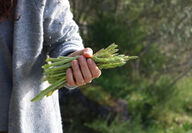
Growing asparagus requires patience—from planting to harvest, it takes two to three years—but the wait is well worth the reward. Homegrown asparagus is one of the earliest vegetables of spring. Its quality is much better than store-bought spears and less expensive. Once established, this vegetable is easy to grow. And asparagus is beautiful. A member of the lily family, its fern-like foliage turns from green to gold in fall and can be a backdrop to chrysanthemums or other late-season flo...
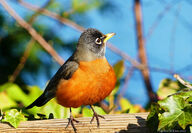
American robins are a favorite harbinger of spring, but most people take this ubiquitous Oregon native for granted. Though still abundant, robins are declining in urban settings and could use some help from homeowners. Oregon State University Extension Service wildlife experts encourage Oregonians to learn about these underappreciated native birds. They’ve developed the following information to help people foster robins in their landscape. * Robins (Turdus migratorius) seen in the winter months...
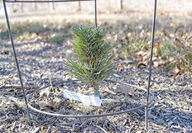
If conifer tree planting is on your late winter or early spring to-do list, there are some things you can do to improve your success. When it comes to planting conifers, timing is everything, according to John Punches, Oregon State University Extension Service forester and associate professor in the OSU College of Forestry. Punches recommends planting when the upper 10 inches of soil is moist, the soil is not frozen more than a half-inch deep, the snow cover is less than two inches and air...
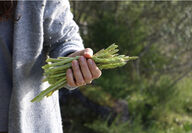
Growing asparagus requires patience – from planting to harvest takes two to three years, but the wait is well worth the reward. Homegrown asparagus is one of the earliest vegetables of spring. Its quality is much better than store-bought spears, and it’s less expensive. Once established, this vegetable is easy to grow. And asparagus is beautiful. A member of the lily family, its fern-like foliage turns from green to gold in fall and can be a backdrop to chrysanthemums or other late-season flower...
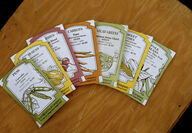
Beautiful seed catalogs hit mailboxes every January, tempting gardeners with full-color photos and glowing descriptions. Before you buy, though, read those enticing seed packets. Nichole Sanchez, Oregon State University Extension Service horticulturist, tells gardeners to plan before choosing seed. It’s so easy to go overboard. Of course, if you do there’s always someone happy to take them off your hands. Understanding terms associated with seeds will help you pinpoint which selections best ser...
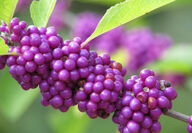
When winter comes and the menu for birds shrinks in urban backyards, they rely on the kindness of humans. That doesn't mean just a bird feeder of seeds and nuts. "Different birds are attracted to different foods and it's good to have a variety," said Dana Sanchez, a wildlife specialist for Oregon State University's Extension Service. "In addition to bird feeders, which people sometimes forget to fill, they need plants to forage on." This time of year, you'll notice winter wrens, pine siskins,...

Wisteria delivers a beautiful spring display, but this vigorous vine needs plenty of pruning to keep it from swallowing the garden. “Wisteria are very vigorous vines and can climb easily to 30 to 40 feet,” said Neil Bell, a horticulturist with Oregon State University Extension Service. “They can be quite heavy and should be grown on a strong structure.” When people see the jaw-dropping blooms erupt in mid-spring, they covet wisteria for their garden. But, they should first know that in addition...